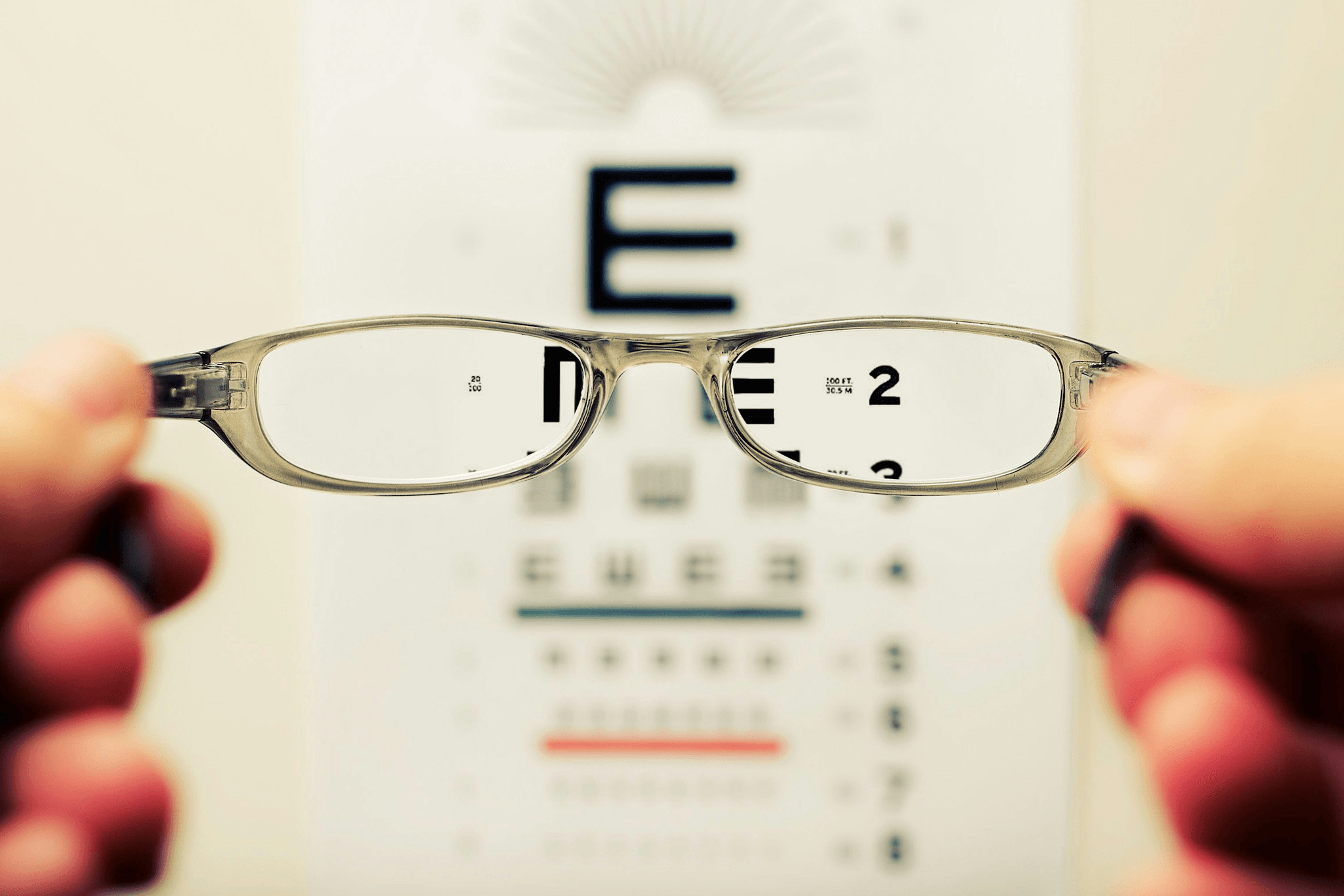Introduction

Navigating the world of eye prescriptions can feel like learning a new language, especially when you encounter terms like OD and OS. Understanding eye prescription basics is crucial for anyone who wears glasses or contacts, as it directly impacts your vision health. Whether you're trying to decipher your own prescription or simply curious about what these abbreviations mean, this guide will help clarify the often-confusing terminology surrounding eye care.
Understanding Eye Prescription Basics
At the core of every eyeglass prescription lies a simple yet essential concept: each eye has its own unique needs. The terms OD and OS refer to the right and left eyes respectively, but many people still find themselves scratching their heads over what these abbreviations truly signify. Familiarity with your eyeglass prescription is not only important for selecting the right lenses but also for ensuring optimal vision correction.
The Importance of OD and OS
Understanding what OD and OS mean is vital for anyone who wants to take charge of their eye health. These abbreviations are more than just letters; they represent different aspects of your vision that need addressing in order to achieve clarity in sight. Knowing how to read your eyeglass prescription can empower you to communicate effectively with your optometrist and make informed decisions about your eyewear.
Common Confusion in Eye Care
It's no wonder that many people get confused when it comes to OD vs OS—these terms sound similar yet have distinct meanings that can leave even seasoned patients puzzled. Misunderstanding what does OD mean in the eye or on a prescription can lead to mismatched lenses or ineffective vision correction strategies. By clearing up this confusion, we aim to equip you with the knowledge needed to confidently navigate discussions about your eyewear needs.
What is OD and OS?

Defining OD and OS in Simple Terms
In simple terms, OD and OS are shorthand used by eye care professionals to differentiate between your two eyes. Think of it like a secret code that helps them communicate important information about your vision needs. Remembering that OD is for the right eye and OS is for the left can help clear up any confusion you might have when looking at your eyeglass prescription.
The Role of Each Eye
Each eye plays a unique role in how we perceive the world around us. The right eye (OD) contributes to our overall field of vision and depth perception, while the left eye (OS) adds its own distinct perspective. When both eyes work together harmoniously, they provide a fuller picture—literally! This balance is essential in understanding how to read your eyeglass prescription accurately.
Why Both Eyes Matter in Prescription
For instance, one eye might be nearsighted while the other is farsighted; hence, each will require specific adjustments reflected in your eyeglass prescription. Knowing what does OD mean on a prescription can help you grasp why it's vital to consider both eyes rather than just focusing on one—after all, teamwork makes the dream work!
How to Read Your Eyeglass Prescription

Understanding how to read your eyeglass prescription can feel like deciphering a secret code, but fear not! With a little guidance, you'll be able to navigate the world of optometry with confidence. This section will break down the key components of your prescription, decode those mysterious numbers and letters, and clarify common abbreviations you might encounter.
Key Components of Your Prescription
When you look at your eyeglass prescription, there are several key components that stand out. Typically, you'll see sections labeled for each eye—OD for the right eye and OS for the left eye—making it clear which numbers correspond to which side. Additionally, you'll find measurements indicating sphere (SPH), cylinder (CYL), and axis (AXIS), all of which play crucial roles in determining how well you see.
The sphere measurement indicates whether you are nearsighted or farsighted; a negative number means you're nearsighted (myopia), while a positive number indicates farsightedness (hyperopia). The cylinder measurement addresses astigmatism by showing how much correction is needed for that condition. Finally, the axis tells us the orientation of astigmatism correction in degrees—from 0 to 180—ensuring that your lenses fit your eyes precisely.
Decoding the Numbers and Letters
Once you've identified the key components on your prescription, it's time to decode those numbers and letters! For instance, if you see something like -2.00 SPH under OD, it means you're nearsighted with a strength of -2.00 diopters for your right eye. Similarly, if OS shows +1.50 SPH, this indicates farsightedness with a strength of +1.50 diopters in your left eye.
Common Abbreviations and Their Meanings
In addition to OD and OS, there are several other abbreviations commonly found on prescriptions that can leave patients scratching their heads in confusion! For example: PRES stands for prescription power; PD refers to pupillary distance—the distance between your pupils—which is vital for proper lens fitting; and D often denotes diopters used in measuring lens power.
Another abbreviation worth noting is “N,” which usually indicates near vision requirements when dealing with multifocal lenses or reading glasses specifically designed for close work tasks. Familiarizing yourself with these terms will not only enhance your understanding but also empower you during discussions about what does OD mean on a prescription when chatting with your optometrist!
What Does OD Mean in the Eye?

Understanding what OD means in the context of eye care is crucial for anyone navigating the world of vision prescriptions. While many people are familiar with terms like nearsighted or farsighted, they often stumble over the abbreviations OD and OS. So, what does OD mean in the eye? Simply put, it refers to the right eye, an essential component of your overall vision health.
Understanding the Right Eye’s Role
The right eye plays a vital role in how we perceive our surroundings, contributing significantly to depth perception and overall visual acuity. When discussing od vs os, it's important to recognize that each eye has its own unique functions and characteristics that work together seamlessly.
The Significance of OD in Vision Health
The significance of OD extends beyond just being a label on your prescription; it represents a critical aspect of your vision health. If one eye has a different prescription than the other (as indicated by od vs os), it can affect how well you see and function daily. Regular check-ups and understanding what does OD mean on a prescription can help ensure that both eyes are working harmoniously for optimal sight.
Real-world Examples of OD Usage
In practical terms, knowing what does OD mean in everyday scenarios can be enlightening. For instance, if someone says their right lens is prescribed as -2.00 for myopia (nearsightedness), they’re referring to their OD measurement on their eyeglass prescription. Such real-world examples underscore why it's essential to grasp concepts like How to Read Your Eyeglass Prescription and differentiate between terms like od vs os effectively.
What Does OD Mean on a Prescription?

When you receive your eyeglass prescription, you might notice the term OD listed alongside various numbers and letters. But what does OD mean on a prescription? Understanding this piece of terminology is crucial for anyone navigating the world of eye care. It’s not just about numbers; it's about ensuring the best vision possible.
Navigating Prescription Terminology
In eye care, terminology can often feel like a foreign language. The abbreviation OD stands for oculus dexter, which is Latin for right eye. Conversely, OS means oculus sinister, or left eye. Knowing these terms helps demystify your prescription and allows you to better understand your vision needs.
When reading your eyeglass prescription, it’s essential to familiarize yourself with common abbreviations and their meanings. For instance, along with OD and OS, you may encounter other terms such as SPH (sphere), CYL (cylinder), and AXIS. Each component plays a vital role in determining how well you'll see, making it important to grasp their meanings in relation to od vs os.
Differentiating OD from OS on Prescriptions
Understanding the difference between OD and OS is key when reviewing your eyeglass prescription. While OD refers specifically to the right eye, OS pertains exclusively to the left eye—each requiring its own set of measurements for optimal vision correction. This differentiation is particularly crucial if you have varying degrees of vision impairment in each eye.
Moreover, knowing how these terms fit into your overall eyesight can help you communicate more effectively with your optometrist during appointments. If you're ever unsure about what something means on your prescription, don’t hesitate to ask! Clarity regarding od vs os can significantly impact how well you understand your visual health.
Tips for Communicating with Your Optometrist
Effective communication with your optometrist can make all the difference when it comes to understanding what does OD mean in the eye contextually. Before an appointment, jot down any questions or concerns related to od vs os so that nothing slips through the cracks during discussions about your eyeglass prescription or treatment options.
Additionally, consider bringing a copy of previous prescriptions if you're switching doctors or seeking a second opinion; this will provide context for any changes in vision over time. Remember that no question is too small—whether it's about how to read your eyeglass prescription or clarifying specific terminology like OD and OS—your optometrist is there to help!
By staying informed and engaged in conversations regarding your vision care, you'll be better equipped to master both what does OD mean on a prescription and how it affects your daily life.
How to Remember OD vs OS?
Fun Mnemonics to Keep it Straight
One of the best ways to remember the difference between OD and OS is through mnemonics. For instance, think of OD as Oculus Dexter, which means right eye in Latin; you can associate D with dominant or directional. On the flip side, remember that OS stands for Oculus Sinister, or left eye, where you might think of “S” as “sinister” or “side.”
Another clever trick is to visualize a clock: if you're looking at 12 o'clock, the right side (3 o'clock) represents OD while left (9 o'clock) represents OS. By creating these mental images, you'll find it much easier to recall what does OD mean in the eye? when you’re discussing your eyeglass prescription.
Visual Aids for Easy Recall
Visual aids are fantastic tools for reinforcing memory retention when it comes to understanding od vs os. Consider creating a simple chart that lists both terms alongside their meanings—OD on one side and OS on the other—complete with colorful illustrations of eyes labeled accordingly. This visual representation will not only enhance your understanding but also serve as a quick reference guide whenever confusion arises.
You could also use flashcards featuring an image of an eye along with either “OD” or “OS” written boldly underneath each one. The more visually stimulating these aids are, the more likely they’ll stick in your mind when trying to decipher how to read your eyeglass prescription.
Practice Makes Perfect: Engaging Techniques
Engagement is key when mastering how to remember OD vs OS! Try quizzing yourself regularly by writing down various eyeglass prescriptions and identifying which numbers correspond to each eye based on whether they are labeled OD or OS. You can even involve friends or family members by hosting informal quizzes about what does OD mean on a prescription?
Another effective technique involves role-playing scenarios where you explain your own prescription details using proper terminology—this will reinforce both knowledge and confidence in discussing vision health matters with professionals like optometrists. Embracing these engaging techniques will make learning about od vs os not just informative but fun too!
Conclusion
Clearing Up OD and OS Confusion
When discussing od vs os, it's essential to grasp that OD refers to the right eye while OS denotes the left eye. This distinction may seem trivial at first glance, but it plays a significant role in how your vision is assessed and treated. Knowing what does OD mean in the eye not only helps you understand your specific needs but also ensures that you're communicating effectively with your optometrist.
Mastering Your Eyeglass Prescription
To truly master your eyeglass prescription, you must familiarize yourself with how to read your eyeglass prescription accurately and confidently. Understanding the numbers associated with OD and OS will allow you to make informed decisions about your eyewear options. Additionally, learning how to remember OD vs OS through fun mnemonics or visual aids can make this task even easier!
Resources for Eye Care at Aisen Optical
At Aisen Optical, we provide a wealth of resources designed to help you navigate the complexities of eye care, from understanding what does OD mean on a prescription to decoding every aspect of your eyewear needs. Our knowledgeable staff is always ready to answer questions about what is OD and OS? so that you feel confident in every step of your vision journey. Don't hesitate—visit us today for personalized assistance tailored just for you!
